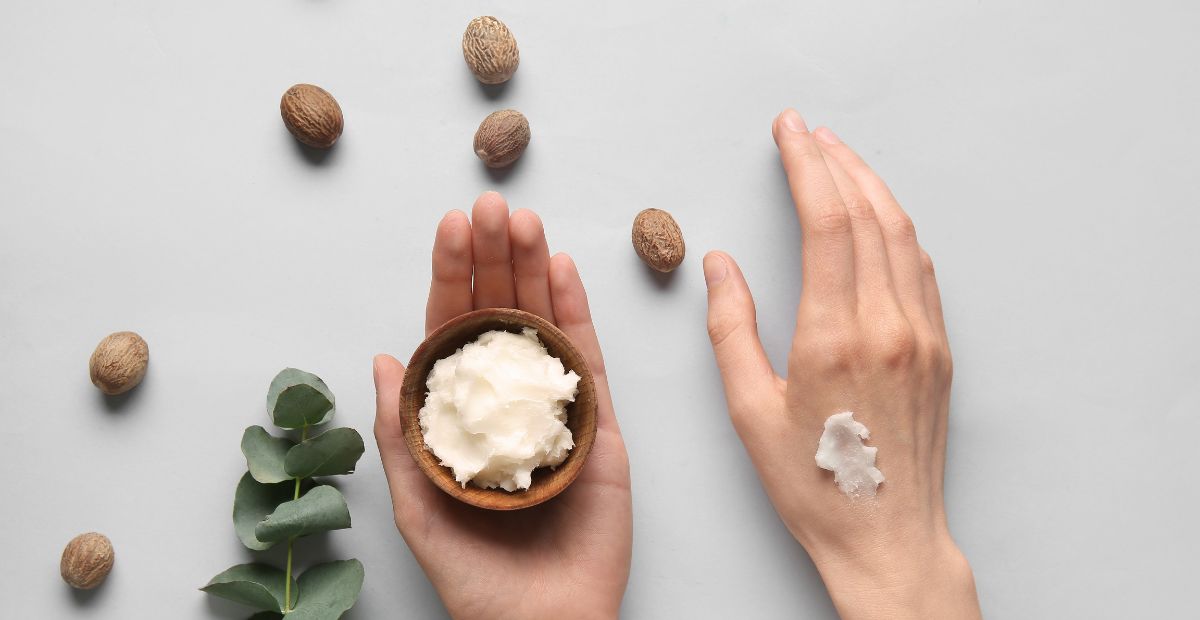Is Sugar Bad for Your Skin? The Not-So-Sweet Truth
Onskin Content Team
Your guides through the skincare chaos

Picture this: you enjoy a slice of cake late at night, and the next morning your skin looks a little off. It’s not just in your head—there’s a real connection between sugar and skin health. The big question—is sugar bad for your skin?—has been studied for years. And the answer isn’t sweet. Too much sugar doesn’t just hurt your waistline; it fuels acne, worsens skin disorders, and speeds up aging.
And while you can control what you put inside you—like sugar—the OnSkin app helps you decode every ingredient that touches your face.
What Does Sugar Do to Your Face?
Ever heard of “sugar face”? It’s that dull, puffy, uneven look your skin takes on after a sugar-heavy weekend. And research backs it up. In one study, mice fed a high-sugar diet developed visibly different skin: reddish, yellowish, and darker. Under the microscope, their epidermis thinned, and the dermis—the supportive layer—began breaking down, making their skin look… older.

Humans show similar patterns. Women who consumed more sugar and refined carbs had more wrinkles, while those who ate diets rich in vitamin C and healthy fats enjoyed brighter, healthier-looking skin.
In short, the answer to “Is sugar bad for your skin?” is a clear yes, and your face is where it shows first. So, what does sugar do to your skin? It speeds up dullness, triggers breakouts, fuels skin disorders, and even deepens fine lines. Let’s take a closer look at these impacts.
Sugar and Acne
You’ve probably heard it before: “Does sugar cause acne?” You may have even searched for answers yourself, maybe at 7 a.m. while staring in the mirror at a breakout.
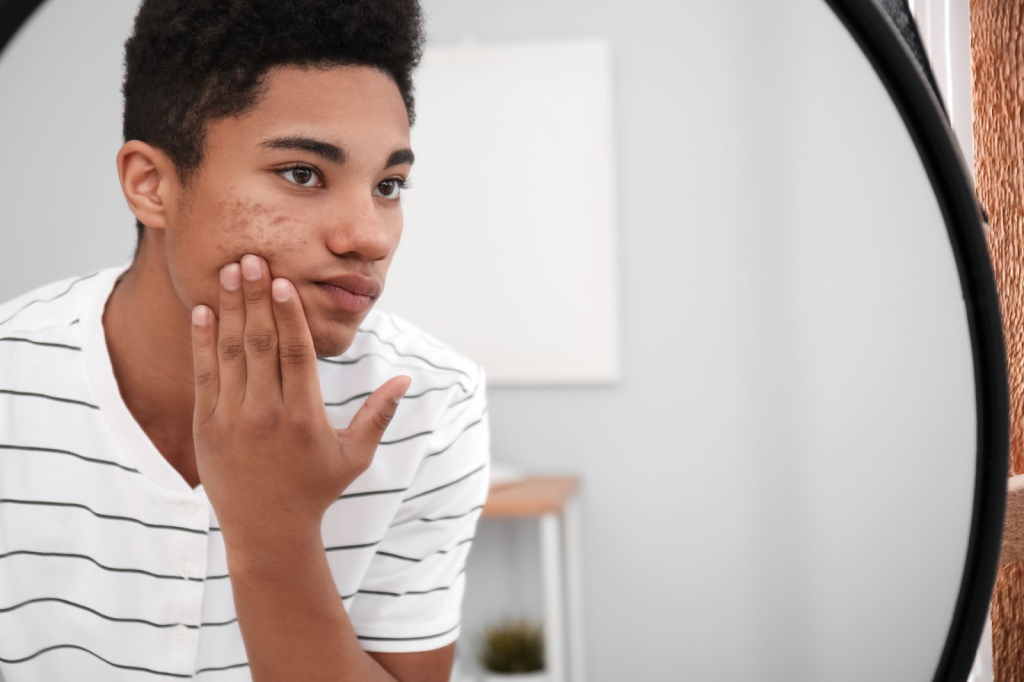
Research suggests yes. A high-glycemic diet—meaning foods that cause quick spikes in blood sugar—has been strongly linked with acne. When sugar hits the bloodstream, insulin levels shoot up. That spike also triggers insulin-like growth factor (IGF-1), which stimulates oil production. More oil = clogged pores. And hello, pimples.
In one massive French study of over 24,000 participants, people who regularly ate sugary foods, drinks, and high-fat desserts were more likely to have acne. Reviews also indicate that high-glycemic diets and foods like milk and chocolate can trigger acne, while foods rich in omega-3 fatty acids may help reduce breakouts.
Thus, can sugar cause acne? The answer is a resounding yes. To be clear: too much sugar can make acne worse, but reducing it and eating more anti-inflammatory foods may help.
Sugar and Skin Disorders
Acne isn’t the only skin condition sugar affects. Eating too many sweets keeps the body in chronic inflammation, which can contribute to or worsen skin diseases like psoriasis or atopic dermatitis.
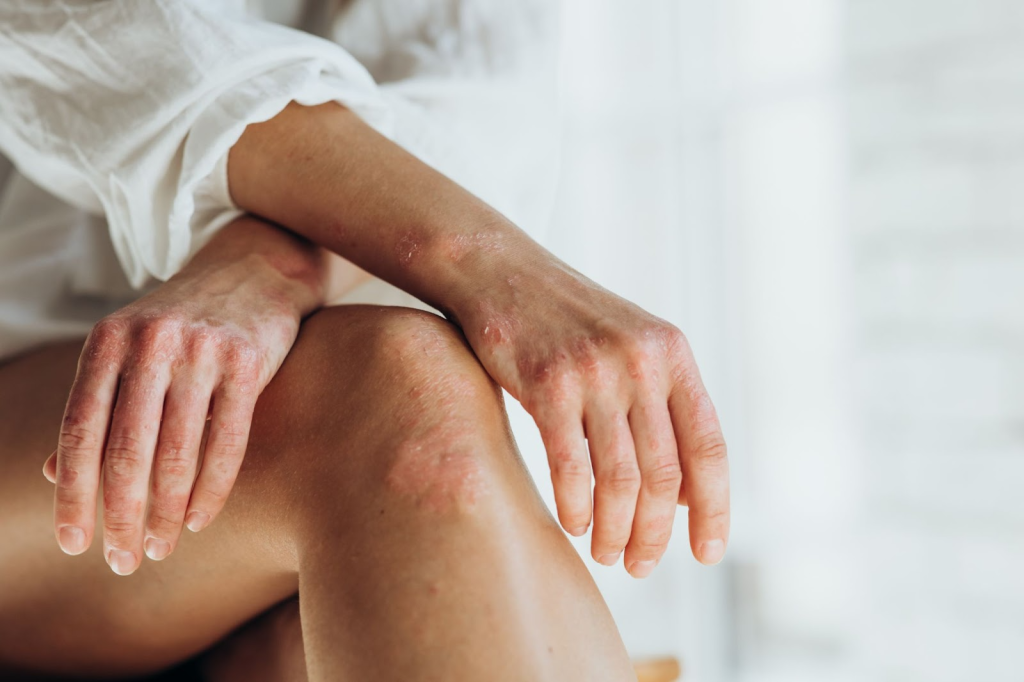
Consider psoriasis. In animal studies, a Western-style diet high in sugar and fat activated immune pathways that triggered psoriasis-like skin inflammation. When the mice were switched back to a balanced diet, their skin improved.
It’s the same story with humans. Reviews highlight that psoriasis patients who follow an anti-inflammatory diet—such as the Mediterranean diet, rich in vegetables, fish, and olive oil but low in sugar—tend to have fewer inflammatory markers and better skin outcomes.
Sugar and Skin Aging
If acne is sugar’s teenage rebellion, wrinkles are its long game. The process behind this is called glycation, where sugar molecules attach to proteins like collagen and elastin, creating damaging compounds known as advanced glycation end products (AGEs).
AGEs stiffen and weaken collagen, leading to sagging, fine lines, and slower wound healing. They’ve been directly linked to visible aging—dullness, yellowing, wrinkles, and loss of elasticity. In diabetic skin, collagen fibers were found to be fragmented and cross-linked, accelerating the look of aging.
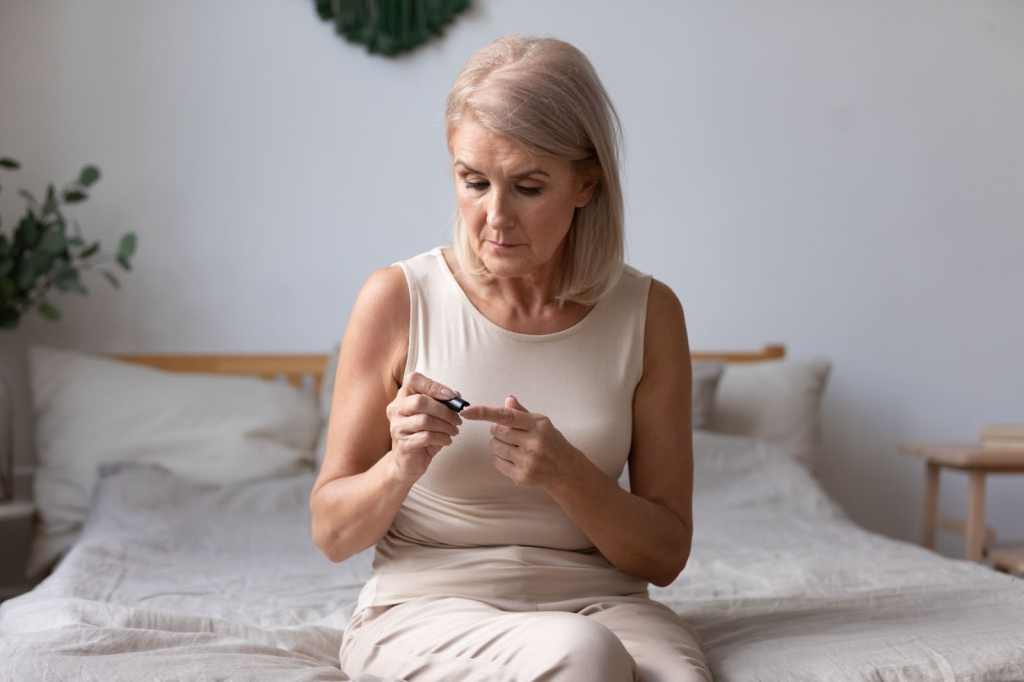
And fructose—the sugar hiding in sodas and fruit juices—may be even worse. In lab studies, skin cells exposed to high fructose grew more slowly, healed wounds poorly, and showed higher levels of inflammation and aging markers.
So the answer to “Is sugar bad for your skin?” couldn’t be clearer. It speeds up the processes we’re trying to slow down with anti-aging ingredients like retinol, vitamin C, and niacinamide—such as collagen loss, dullness, and uneven texture.
What Improves Skin?
If sugar can harm, then what helps? Fortunately, the answer is simple: lower your sugar load.
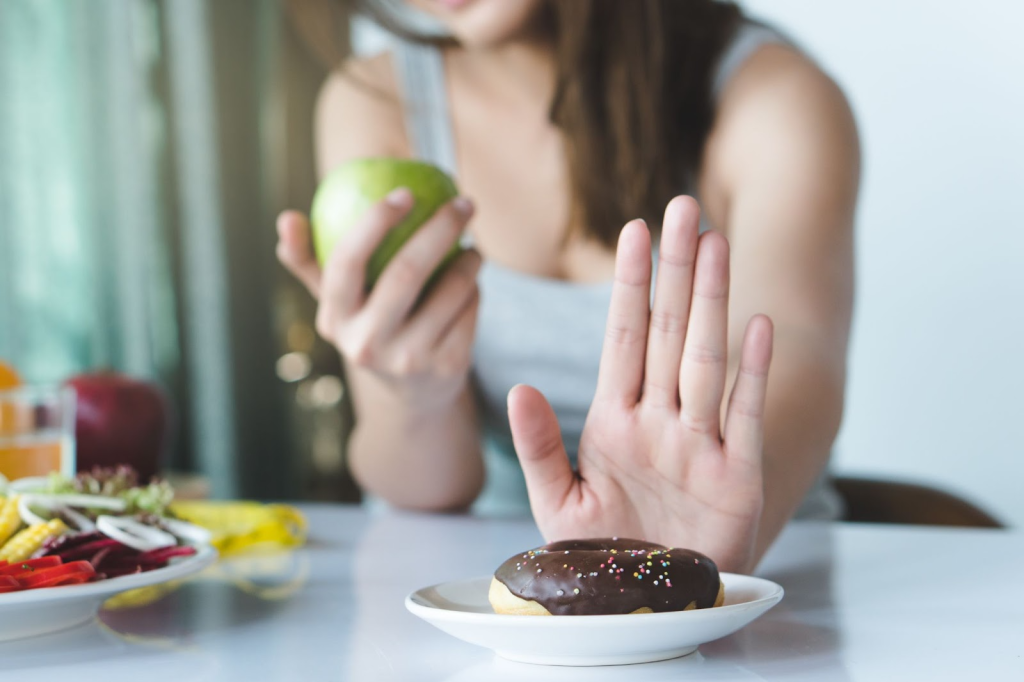
A low-glycemic index diet has been shown to reduce acne, calm inflammation, and even slow the appearance of aging. Cooking methods matter too—steaming and boiling produce fewer AGEs than frying, roasting, or grilling.
On the bright side, nutrients like vitamin C, omega-3 fatty acids, and antioxidants support collagen and reduce oxidative stress, protecting against the effects of sugar on skin. For more tips, check out our guide on foods for healthy skin.
So yes, dessert can stay—but balance it with skin-friendly foods that help your complexion recover.
The Bittersweet Truth
All in all, is sugar bad for your skin? In short, it can be. Sugar is sneaky. It hides in your morning granola, your “healthy” smoothie, and your celebratory cake. But once you know the effects of sugar on skin, it’s hard to unsee them.
The good news? Small swaps make a big difference. Choosing a low-glycemic diet, cooking smart, and leaning on skin-loving nutrients can help undo the damage.
At the end of the day, no one’s saying you can never enjoy dessert again. But maybe think of it this way: every spoonful of sugar is either feeding your sweet tooth—or stealing a little bit of your future glow.
- Unveiling the mechanism of high sugar diet induced advanced glycosylation end products damage skin structure via extracellular matrix-receptor interaction pathway. (2024). https://pubmed.ncbi.nlm.nih.gov/38501159/
- Dietary nutrient intakes and skin-aging appearance among middle-aged American women. (2007). https://pubmed.ncbi.nlm.nih.gov/17921406/
- Association between adult acne and dietary behaviors: Findings from the NutriNet-Santé prospective cohort study. (2020).) https://pubmed.ncbi.nlm.nih.gov/32520303/
- Acne and diet: a review. (2022). https://pubmed.ncbi.nlm.nih.gov/34423427/
- The impact of excessive sugar consumption on skin health: Analysis of biological mechanisms and dermatological effects. (2024). https://apcz.umk.pl/JEHS/article/download/56626/40734/168063
- Short-term western diet intake promotes IL-23‒mediated skin and joint inflammation accompanied by changes to the gut microbiota in mice. (2021). https://pubmed.ncbi.nlm.nih.gov/33485880/
- The impact of diet and physical activity on psoriasis: A narrative review of the current evidence. (2023). https://pubmed.ncbi.nlm.nih.gov/36839198/
- Sugar sag: What is skin glycation and how do you combat it? (2024). https://pubmed.ncbi.nlm.nih.gov/38564405/
- Alterations of dermal connective tissue collagen in diabetes: Molecular basis of aged-appearing skin. (2016). https://pubmed.ncbi.nlm.nih.gov/27104752/
- Fructose-induced glycation end products promote skin-aging phenotypes and senescence marker expression in human dermal fibroblasts. (2025). https://pubmed.ncbi.nlm.nih.gov/40649936/
- Sugar sag: Glycation and the role of diet in aging skin. (2015). https://pubmed.ncbi.nlm.nih.gov/27224842/
FAQ
-
Where do I start with OnSkin?
Download the app and think of a product you’d like to know more about. Then, go to the main screen and choose how you’d like to get the info —by manually looking it up in the search bar, by scanning its barcode, or by simply taking a picture of the packaging. Once you’ve done any of these, you can see how safe the product is and if it suits your skin or hair (if this analysis is available).
-
What is Safety Rating, and how is it calculated?
In OnSkin, we base product rates on ingredients. Each is closely studied by our medical team and then evaluated. This way, each product gets a score from 0 to 100, with 100 as the safest level.
Safety Levels
- Excellent (76–100)
- Good (51–75)
- Not great (26–50)
- Bad (0–25)
These scores are backed by the latest scientific studies. You can find links to the resources we’ve used on each ingredient page. To assess the safety of product ingredients, we evaluate them according to the following parameters/criteria
- Endocrine disruption risk / Reproductive toxicity
Indicates the probability of mimicking, blocking, or interfering with the body hormones.
- Сarcinogenicity
Measures the potential risk of inducing cancer.
- Allergy risk
Estimates the probability of an allergic reaction.
- High concentration alert
Determines the risk of being unsafe in certain amounts.
-
What is Skin Match?
Based on the info you input about your skin type, age, skin care goal, and other “settings,” OnSkin checks how well a product is tailored to your unique skin needs — it’s basically like a dermatologist helping you find the right products, minus the fees and the long wait. The product you’re checking might be labeled as It’s a match!, Hit-or-miss, or Not a match for you. The app also detects ingredient groups such as Anti-acne, Anti-inflammatory, Moisturizes, May be drying, Comedogenic, and others — by tapping one, you see exactly what ingredients from this or that group are in the product.
-
I seem to have a problem with using the app. Who should I contact?
Please reach out to us at [email protected], and we’ll carefully look into your issue. Your ideas for improving the app are also very welcome!
-
Do you have an Android version?
Not yet! Hey Android users, we hear you, and we're thinking about making an Android version, but we haven't started the development yet.
Tracker Sent!
It’s on the way to your inbox.




